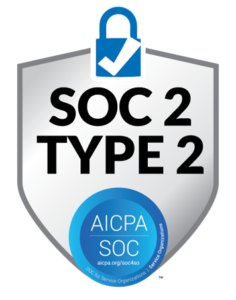Logistics Management editor Bridget McCrea says, “as the highest expense for any warehouse or distribution center (DC) operation, labor management is essential”. But in today’s fast-paced distribution environment, everything from the shortage of labor resources, evolving e-commerce demands, and seasonal sales fluctuations can make labor management particularly challenging.
Today’s Labor Management System Systems solve three basic operational challenges: low performance, high turnover, and high overtime. These operational challenges invariably result in higher-than-expected labor costs per unit. If you’re experiencing any one of these challenges, it is likely leading to higher labor costs which means It’s time to consider adding a true labor management program, including a Labor Management System System (LMS) to your operation.
McCrea says that labor management systems (LMS) offer the right mix of planning, performance, and engagement tools needed to improve workforce productivity.
Here are three steps that distributors can take to step up their labor management practices and reduce their labor costs significantly:-
1- Plan your Work
Higher levels of productivity and utilization are possible when you have the right people in the right place at the right time. Planning and executing a daily labor plan, utilizing accurate performance standards and real-time employee productivity levels, not only provides you with the most exact prediction of your full-time and temporary worker needs but gives you the best chance of avoiding unwanted overtime hours.
Dwight Klappich, Research Vice President for Gartner, expects LMS to help distributors become more proactive with labor planning—a benefit that will be particularly useful for companies that deal with seasonal sales fluctuations and irregular schedule requirements. “Companies are definitely getting interested in this as an LMS functionality,” says Klappich.
2- Manage Performance in Real-time
Real-time performance monitoring provides your floor managers with the information they need to make informed decisions about resource assignments, predict over time and how to minimize it, and coach associates in real-time having the largest impact on overall facility performance. Of course, real-time performance management is only the beginning of LMS functionality. Today’s modern systems also include labor planning, incentive calculations, recognition boards, formal coaching, accountability management, alerting, business intelligence dashboards, and more.
3- Engage with your Floor Associates
Today’s labor shortage has made it exceedingly difficult to operate effectively, particularly if you are experiencing more than 10% turnover. The cost of turnover is tremendous, but it is also resulting in the mental fatigue of your floor managers. If organizations are going to run effectively, reducing turnover is near the top of the list. Obviously, paying a competitive wage is critical but not always enough. Top companies are paying competitive wages and offering incentive pay to push their compensation to the top 80 percentile of their market. This level of pay might seem over the top but is self-funding if supported by defined Standard Operating Procedures, multi-determinant engineered labor standards, and labor management software. These supporting elements of a productivity program will assure your team is working at peak performance.
Additionally, today’s Labor Management System Systems provide observation and coaching functionality, management/employee engagement triggers, and recognition/reward management to assure your culture is one where people want to work. Your floor managers are an important extension of your company’s culture and their relationship with floor employees is critical to the success of your company’s retention program.
STAY COMPETITIVE AND REDUCE YOUR LABOR SPEND WITH LMS
In today’s supply chain environments, the best operations have transitioned from labor tracking tools to labor management software to combat low productivity, high turnover, and excessive overtime, all of which result in high labor costs.
Typical labor management programs that include engineered labor standards, LMS, accountability, incentive pay, and recognition programs result in labor cost savings of 8 to 15 percent. However, as labor costs represent as much as 65 percent of the average warehouse budget, even small improvements can produce noticeable results.
Connect with TZA today to learn how ProTrack LMS and TZAs supporting labor management services can transform your distribution centers into high-performance operations.
Labor management technology presents the opportunity to better plan, and manage your operation in real-time, improve your culture, boost workforce performance, and reduce your cost per unit. For more insight Schedule a Demo or Free Operational Labor Audit.
You can also use our Contact Form and someone from our team will reach out to help or call us directly at (800) 229-3450.
Related TZA Resources
TZA Key Strategies for Reducing Overtime Costs in your Distribution Centers
TZA Best Practices for Onboarding Your Workforce
TZA Engineered Labor Standards – The Foundation for a High-Performance Workforce


